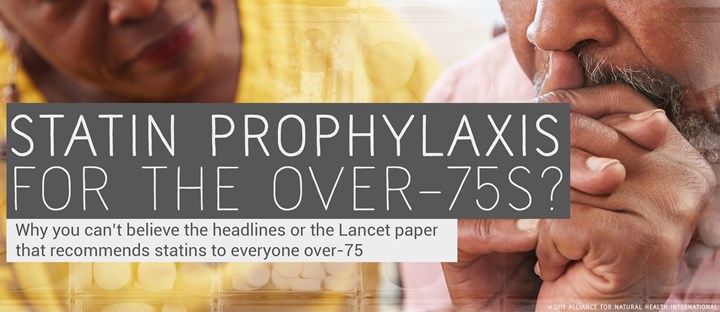Content Sections
Tick tock, tick tock, the clock ticks, the year passes and the seasons change. In many countries around the world the clocks have gone back and as the Northern Hemisphere plunges into the dark days of winter many people will find their mood dropping.
When the days shorten and it turns cold, it’s normal to feel a little blue. But for some people they experience something more extreme – a form of depression that’s seasonal, which can interfere with their mood, weight, energy levels and sleep.
Are you SAD?
Seasonal Affective Disorder (SAD) is more than just a mild case of the ‘winter blues’. It’s a form of mild to moderate depression linked to the reduction in day length during the winter. It’s estimated that 10% of the population may experience changes in their mood as the seasons change. The further you are from the equator, the greater the risk.
If you live in northern climes, experience a noticeable drop in mood as the seasons move to autumn and winter, with a lifting of your mood in the spring and summer months, you may be suffering from SAD.
Typical symptoms include:
- persistent low mood (during winter months)
- loss of pleasure or interest in normal everyday activities
- feelings of despair, guilt and worthlessness
- a lack of energy and sleepiness during the day
- a need to sleep for longer and finding it much harder to get up in the morning
- withdrawing socially, not wanting to interact with others
- cravings for carbohydrates and sugary foods leading to weight gain
Humans are designed and built for outdoor living, yet today’s modern lifestyles encourage us to spend most of our lives indoors with little exposure to natural light. Many of us, during the deepest part of the winter, will find ourselves going to work in the dark and getting home in the dark. Artificial lighting allows us to work and socialise 24 hours day. We override our body’s natural rhythms, particularly if we work shifts. Disrupting our circadian rhythms can impact our ability to regulate hormonal balance, particularly in relation to appetite control and metabolism. Add in the temptations of Christmas fare and our cravings for carbohydrate and sugar heavy foods is easily satisfied! Then there’s the down-spiral of our circulating levels of vitamin D, or hypovitaminosis D as it’s sometimes referred to.
In a small number of individuals there may also be a genetic susceptibility to developing SAD.
Are you too SAD to Sleep?
Sleep deprivation is an all too often accepted hazard of modern life. As we get ever busier, our stress levels increase, our sleep suffers and we can plunge into depression.
With the onset of winter many mammals slow down and even hibernate. The shorter days and low exposure to natural light can affect the production of two key hormones, serotonin and melatonin, which are linked to mood and sleep regulation. This means that our lower exposure to natural, intense light during the winter months, often also associated with less physical activity, contributes to lower sleep quality during the winter months.
Sleep disturbance is also a key indicator of SAD, which often causes or exacerbates many sleep problems including hypersomnia (oversleeping) or insomnia.

Sunshine vitamin insufficiency
Referred to as a vitamin, but actually a prohormone, vitamin D is made by our bodies when we expose bare skin to the sun, especially when it’s high in the sky, assuming we’re not slathered in high SF sunscreen. Low levels of circulating vitamin D are strongly associated with depression and research has also linked low levels of circulating vitamin D with SAD. The mechanism is likely linked to vitamin D’s role, as a prohormone, in the synthesis of serotonin and dopamine, levels of which are typically reduced in those suffering from SAD.
How can reduce your SAD-ness?
- Consider getting some winter sunshine by taking a holiday in sunnier climes. But don’t forget to expose around 80% of your body to the sun for about 15–20 mins every day you’re away (make sure you don’t burn though!)
- Spend as much time out of doors as possible to increase your exposure to natural light, even on dull days
- Check your vitamin D levels and target circulating vitamin D levels of 100-150 nmol/L (40-60 ng/ml)
UK readers can use home vitamin D kits from City Assays for £28/test.
North American readers can get your test kits via GrassrootsHealth D*Action
- Supplement if needed. If you live in northern climes or have reduced access to sunshine, take a vitamin D3 (cholecalciferol) supplement. The Vitamin D Council recommends adults take 5000 IU/day (125 mcg/day), children 1000 IU/day (25 mcg/day) per 25 lbs (11 kg) of body weight and infants 1000 IU/day (25 mcg/day).
- Lightbox therapy can be very helpful in lifting mood. The boxes provide summer levels of light and can be placed near your desk or in other areas where you spend large amounts of time indoors. To buy light boxes worldwide, in the UK or if you’re in the US/Canada
- Cognitive Behavioural Therapy (CBT) – Research has shown that CBT can significantly improve mood in SAD sufferers compared to light therapy alone
- Nourish your gut – the health of our gut microbes and mental health are intimately linked, literally. Our gut and brain are physically linked so the health of our gut has a major impact on the development of depression. For more information on how to follow a gut nourishing diet visit our Food4Health campaign page
- Physical activity can be a powerful medication and is a sure-fire way to boost serotonin levels and other feel good chemicals while helping you sleep better. Even a brisk, daily walk of just 10 minutes outside will help.








Comments
your voice counts
There are currently no comments on this post.
Your voice counts
We welcome your comments and are very interested in your point of view, but we ask that you keep them relevant to the article, that they be civil and without commercial links. All comments are moderated prior to being published. We reserve the right to edit or not publish comments that we consider abusive or offensive.
There is extra content here from a third party provider. You will be unable to see this content unless you agree to allow Content Cookies. Cookie Preferences